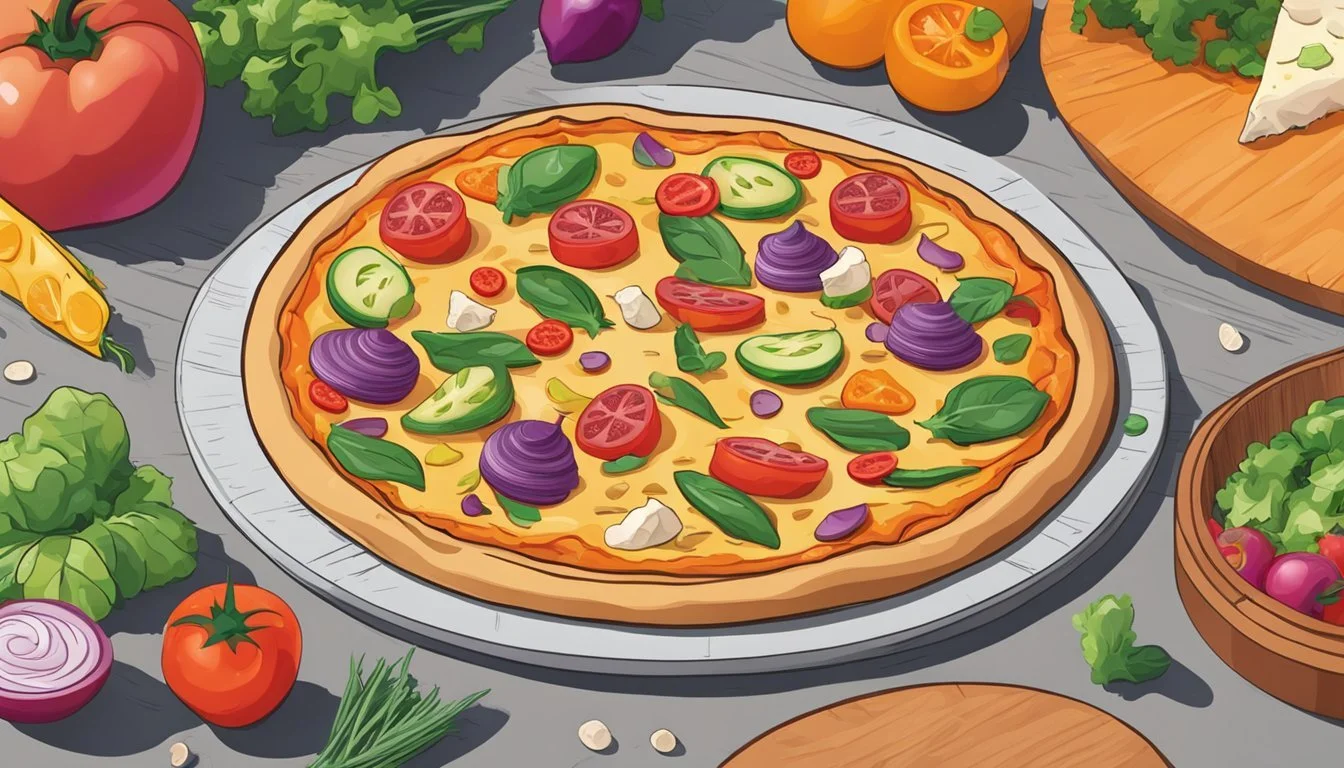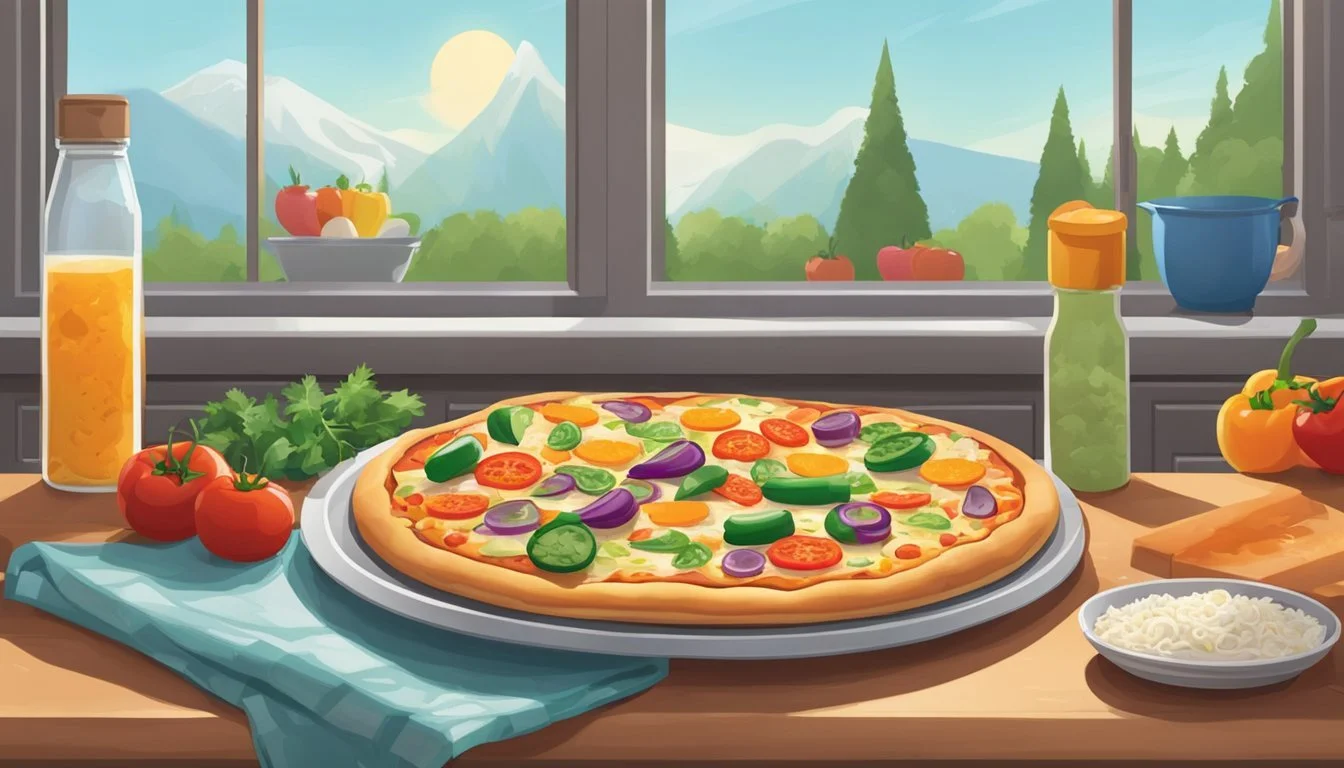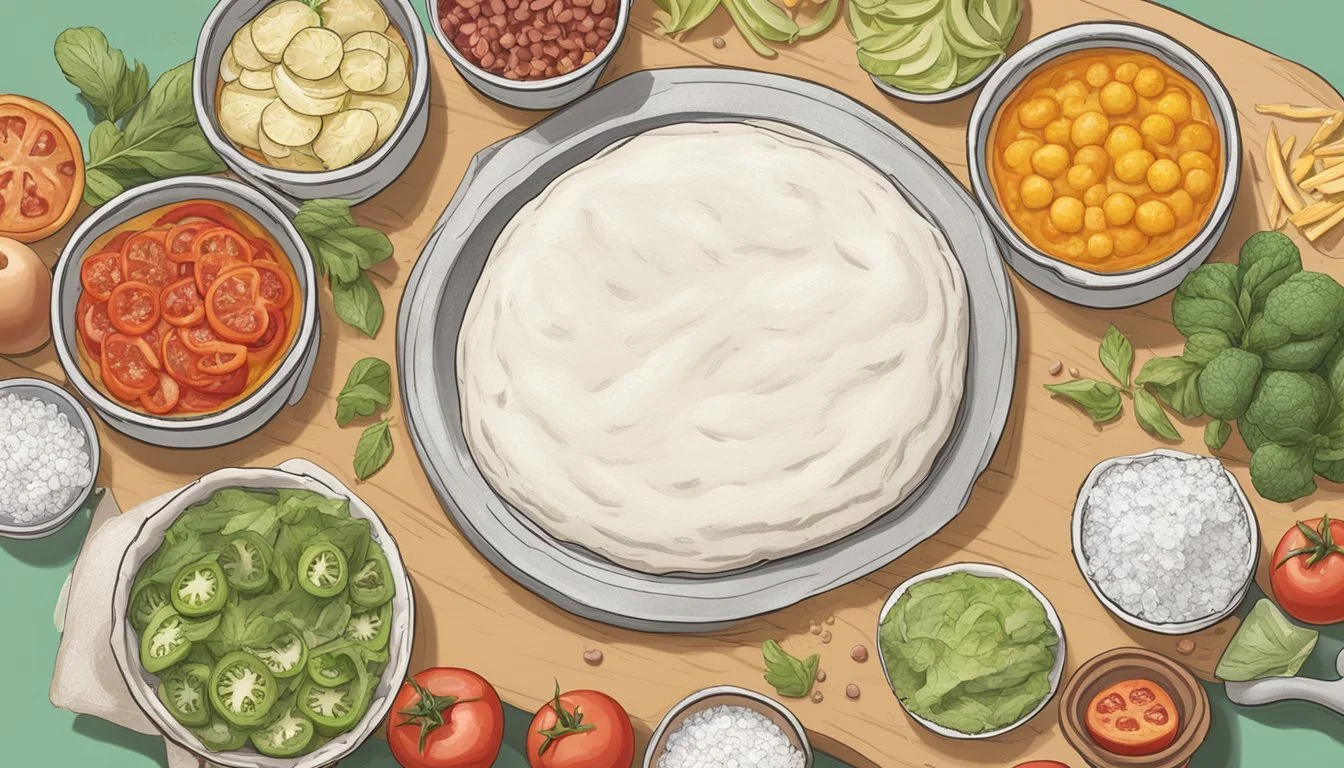Frozen Pizza vs Fresh Pizza: Which is Healthier for You?
Pizza lovers often face a dilemma when choosing between frozen and fresh options. Both have their merits, but when it comes to health considerations, the differences can be significant.
Generally, fresh pizza tends to be healthier than frozen pizza due to higher quality ingredients and less processing. Fresh pizzas typically contain fewer preservatives and additives, allowing for more control over the nutritional content. However, some frozen pizzas now offer healthier alternatives with whole grain crusts, lean proteins, and vegetable toppings.
For those seeking convenience without sacrificing nutrition, certain frozen pizza brands have stepped up their game. Some options now boast lower calorie counts, reduced sodium levels, and increased protein content compared to traditional frozen pizzas. When selecting a frozen pizza, it's important to check the nutrition label and ingredient list to make informed choices that align with individual health goals.
Understanding Frozen and Fresh Pizza
Frozen and fresh pizzas offer distinct characteristics in terms of ingredients, preparation, and nutritional content. Both types come in a variety of styles and flavors to suit different preferences.
Definition and Types of Frozen Pizza
Frozen pizza is a pre-made pizza that is stored in a freezer until ready for consumption. Common varieties include cheese, pepperoni, and margherita. Some brands like California Pizza Kitchen offer gourmet options with unique toppings. Trader Joe's Pizza Margherita is popular for its simple, classic flavor profile.
Frozen pizzas often contain preservatives to maintain quality during storage. They typically have a longer shelf life compared to fresh pizzas. Many frozen pizzas are designed for quick and easy preparation, usually requiring just 10-15 minutes in an oven.
Characteristics of Fresh Pizza
Fresh pizza is made to order using raw ingredients. Neapolitan pizza, known for its thin crust and minimal toppings, is a prime example of traditional fresh pizza. Fresh pizzas can feature a wide range of toppings, from classic pepperoni to gourmet options like spinach or pesto.
Fresh pizzas are often perceived as healthier due to their use of fresh ingredients and lack of preservatives. They generally have a shorter shelf life and require immediate consumption. The preparation process for fresh pizza involves hand-stretching the dough and assembling toppings just before baking.
Fresh pizzas tend to have a more varied texture, with a crisp crust and melted cheese straight from the oven. They offer customization options, allowing customers to choose their preferred toppings and crust thickness.
Nutritional Comparison
Frozen and fresh pizzas differ significantly in their nutritional profiles. These differences stem from ingredients, preparation methods, and preservation techniques.
Caloric and Macronutrient Content
Frozen pizzas often contain more calories than fresh alternatives. A typical frozen pizza slice has 300-400 calories, while a fresh slice may have 250-350 calories. Carbohydrate content is similar, ranging from 30-40g per slice for both types.
Protein levels vary based on toppings. Meat-topped frozen pizzas provide 12-15g of protein per slice. Fresh pizzas with similar toppings offer comparable protein amounts.
Fat content differs more noticeably. Frozen pizzas frequently contain 10-15g of fat per slice, with 4-6g being saturated. Fresh pizzas may have 8-12g of fat, with 3-5g saturated.
Fiber content depends on crust type and vegetable toppings. Whole grain crusts boost fiber in both frozen and fresh options.
Vitamins and Minerals Profile
Fresh pizzas often have an edge in vitamin and mineral content due to fresher ingredients. They typically provide more vitamin C from fresh vegetables and B vitamins from freshly prepared dough.
Frozen pizzas may have added vitamins and minerals to enhance nutritional value. These often include calcium, iron, and vitamin D.
Both types offer similar amounts of calcium from cheese toppings. Iron content is comparable, primarily from meat toppings and fortified flour.
Fresh pizzas with vine-ripened tomatoes provide more lycopene, an antioxidant linked to heart health.
Sodium and Preservatives
Sodium levels are a key difference between frozen and fresh pizzas. Frozen varieties often contain 600-900mg of sodium per slice. Fresh pizzas typically have 400-700mg per slice.
Frozen pizzas rely on preservatives to extend shelf life. Common additives include BHA, BHT, and propionate. Fresh pizzas generally lack these artificial preservatives.
Salt acts as a natural preservative in both types. However, frozen pizzas often use more to enhance flavor and increase shelf stability.
Balancing Nutrient-Dense Toppings
Both frozen and fresh pizzas can be made healthier with nutrient-dense toppings. Grilled chicken adds lean protein. Vegetables like bell peppers, spinach, and mushrooms boost vitamin and fiber content.
Olive oil as a base or drizzle adds heart-healthy fats. It's more commonly used in fresh pizzas.
Fresh pizzas allow for customization of toppings, potentially increasing nutritional value. Some frozen pizzas now offer vegetable-rich or lower-calorie options to compete.
Portion control remains crucial for both types. A single slice can provide a balanced meal when paired with a side salad.
Health Considerations
Frozen and fresh pizzas differ in their nutritional profiles and health impacts. The choices consumers make between these options can significantly affect their overall well-being, dietary needs, and nutritional goals.
Impact on Overall Health
Frozen pizzas often contain higher sodium levels and preservatives to extend shelf life. These additives can contribute to increased blood pressure and other health concerns. Fresh pizzas, when made with wholesome ingredients, may offer more nutrients and fewer processed components.
Some frozen pizzas are fortified with vitamins and minerals, potentially boosting their nutritional value. Fresh pizzas allow for control over ingredients, enabling the use of organic, non-GMO, or locally sourced produce.
Portion control is easier with frozen pizzas due to pre-set serving sizes. Fresh pizzas may lead to overeating if not portioned carefully.
Allergens and Dietary Restrictions
Frozen pizzas cater to various dietary needs with gluten-free, nut-free, and vegan options. These specialized products make it easier for individuals with allergies or restrictions to enjoy pizza safely.
Fresh pizzas offer flexibility for customization, allowing for the omission or substitution of allergens. This adaptability is particularly beneficial for those with multiple food sensitivities.
Grain-free and low-carb pizza options are more readily available in the frozen section, appealing to those following specific diets.
Healthier Frozen Pizza Options
Several brands now offer healthier frozen pizza alternatives. These products often feature:
Cauliflower or vegetable-based crusts
Plant-based toppings
Reduced sodium and sugar content
Higher fiber and protein levels
Some healthier frozen pizzas incorporate antioxidant-rich ingredients like kale, spinach, and tomatoes. These nutrient-dense toppings can boost the pizza's overall nutritional profile.
Brands like American Flatbread and Newman's Own provide organic options with cleaner ingredient lists. Quest offers a high-protein, low-carb pizza suitable for specific dietary goals.
Ingredients and Processing
Frozen and fresh pizzas differ significantly in their ingredients and processing methods. These differences impact nutritional value, taste, and overall quality.
Common Ingredients in Frozen Pizza
Frozen pizzas often contain a mix of convenience and preservative ingredients. The crust typically includes wheat flour, yeast, and oils. Many brands use enriched flour to boost nutrient content. Toppings vary but commonly feature tomato sauce, mozzarella cheese, and vegetables like mushrooms or red peppers.
Some frozen pizzas incorporate alternative crusts made from cauliflower or chickpeas to appeal to health-conscious consumers. Meat toppings such as sausage or pepperoni are usually pre-cooked and processed.
Preservatives and stabilizers are added to maintain texture and extend shelf life. These may include modified food starch, sodium phosphates, and BHT.
Quality of Ingredients in Fresh Pizza
Fresh pizzas generally use higher-quality, less processed ingredients. The dough is often made daily with simple ingredients like flour, water, yeast, and olive oil. Some pizzerias use specialty flours or incorporate whole grains for added nutrition.
Toppings for fresh pizzas are typically fresher and less processed. Vegetables are often cut just before use. Cheeses like mozzarella or feta may be higher quality or locally sourced. Many pizzerias offer specialty sauces such as pesto or garlic olive oil.
Meats used on fresh pizzas are more likely to be cooked on-site rather than pre-processed. Some establishments use organic or locally sourced ingredients for enhanced flavor and quality.
Additives and Artificial Ingredients
Frozen pizzas frequently contain additives to maintain quality during storage and reheating. Common additives include:
Preservatives like potassium sorbate
Emulsifiers such as soy lecithin
Dough conditioners like L-cysteine
Artificial flavors and colors
These additives help maintain texture, prevent spoilage, and enhance appearance. Some brands use artificial sweeteners or added sugars to improve taste.
Fresh pizzas generally contain fewer additives. However, some pizzerias may use pre-made sauces or toppings that contain preservatives. Artisanal pizzerias often pride themselves on using minimal additives and artificial ingredients.
Consumers concerned about additives should check labels carefully on frozen pizzas or inquire about ingredients at pizzerias.
Types of Diets and Pizza
Pizza can be adapted to suit various dietary needs and preferences. Many brands now offer specialized options to cater to different nutritional requirements and restrictions.
Pizza Options for Specialized Diets
Gluten-free pizzas use alternative flours like cauliflower, coconut, or almond. Brands like Cali'flour Foods and Cappello's offer grain-free crusts suitable for paleo diets.
Vegan pizzas feature plant-based cheese alternatives and veggie toppings. Banza makes high-protein pizzas using chickpea flour crust.
Keto-friendly options have low-carb crusts made from cheese, eggs, or almond flour. Against the Grain produces grain-free pizzas that fit this category.
Mediterranean thin crust pizzas often include ingredients like olives, feta, and roasted vegetables. These align well with heart-healthy eating patterns.
Cauliflower crust pizzas have gained popularity as a lower-carb alternative. They're often suitable for those following gluten-free or grain-free diets.
Cooking and Convenience
Frozen and fresh pizzas differ significantly in their preparation methods and storage requirements. These factors impact the overall convenience and accessibility of each option.
Preparation Time and Ease
Frozen pizzas offer unmatched convenience. Simply preheat the oven, remove packaging, and bake for 10-15 minutes. Pre-made pizza crusts provide a middle ground, allowing customization with toppings while saving time on dough preparation. Fresh pizzas require more effort, including making dough, chopping ingredients, and assembling toppings. This process can take 30-60 minutes, not including dough rise time.
Some frozen pizzas now feature alternative crusts made from coconut flour or almond flour, catering to dietary preferences. These options often require similar cooking times to traditional frozen pizzas.
Shelf Life and Storage
Frozen pizzas excel in longevity. They can be stored in the freezer for 3-6 months, providing a ready meal option at any time. This extended shelf life reduces food waste and allows for bulk purchasing.
Fresh pizzas have a much shorter lifespan. Once prepared, they should be consumed within 3-4 days if refrigerated. Dough can be frozen for future use, but toppings are best added fresh.
Pre-made pizza crusts offer a compromise. They can be stored in the pantry for several weeks or frozen for longer periods. This allows for some of the convenience of frozen pizzas while still enabling customization.
Comparative Taste Experience
The flavor profiles of frozen and fresh pizzas differ significantly due to ingredients, preparation methods, and cooking processes. These factors impact the overall taste, texture, and enjoyment of each pizza type.
Flavor Profiles of Frozen vs Fresh Pizza
Fresh pizzas typically offer a more vibrant and pronounced flavor profile. The dough has a better chance of developing complex flavors during fermentation. Toppings retain their natural taste and texture, contributing to a more authentic experience. Fresh mozzarella melts evenly, creating a cheesy, gooey texture that enhances the overall taste.
Frozen pizzas often have a more muted flavor profile. The freezing process can diminish the intensity of some ingredients. However, manufacturers compensate by adding extra cheese and toppings to boost flavor. Some frozen pizzas use specially formulated sauces and seasonings to maintain taste throughout freezing and reheating.
Texture differences are notable. Fresh pizzas generally have a crispy, airy crust with a slight chew. Frozen pizzas may have a denser, less crispy crust due to moisture retention during freezing and reheating. This can affect the overall mouthfeel and enjoyment of the pizza.
Environmental and Economic Factors
Pizza production and consumption have significant environmental and economic implications. The choice between frozen and fresh pizza affects sustainability, resource use, and consumer costs.
Sustainability of Pizza Production
Frozen pizza manufacturing generally has a larger environmental footprint. The energy-intensive freezing process and cold storage throughout the supply chain contribute to higher greenhouse gas emissions. Packaging for frozen pizzas often uses more materials, increasing waste.
Fresh pizza can be more sustainable when ingredients are locally sourced. Many pizzerias use organic and non-GMO ingredients, reducing pesticide use and supporting environmentally-friendly farming practices. However, food waste can be higher with fresh pizza if ingredients spoil before use.
Transportation impacts vary. Frozen pizzas are shipped less frequently in bulk, while fresh pizza ingredients may require more frequent deliveries. The carbon footprint depends on shipping distances and methods for both options.
Cost Analysis: Frozen vs Fresh
Frozen pizzas are typically more affordable for consumers. Mass production, economies of scale, and longer shelf life allow for lower prices. Sales and bulk purchases can further reduce costs.
Fresh pizzas from restaurants or made at home tend to be pricier. Labor costs for pizza makers and higher-quality ingredients contribute to increased expenses. However, making pizza at home with basic ingredients can be cost-effective.
Pizza Type Average Cost Frozen $6 - $12 Restaurant $10 - $20 Homemade $5 - $10
Organic and non-GMO options are available for both frozen and fresh pizzas but usually come at a premium price. The cost difference reflects the higher production expenses for these specialty ingredients.
Conclusion
Both frozen and fresh pizzas can be part of a balanced diet when consumed in moderation. Frozen pizzas offer convenience and longer shelf life, while fresh pizzas provide customization and potentially fresher ingredients.
Nutritionally, there's no clear winner. Some frozen pizzas are formulated to be healthier, with whole grain crusts and lean toppings. Fresh pizzas allow for control over ingredients but can be high in calories depending on toppings.
The healthiest choice depends on individual dietary needs and preferences. Reading labels for frozen pizzas and being mindful of toppings for fresh pizzas is key.
Portion control remains crucial for both options. Pairing pizza with a side salad can boost nutritional value and help limit overeating.
Ultimately, enjoying pizza occasionally as part of an overall balanced diet is more important than strictly choosing frozen or fresh. Making informed choices and practicing moderation allows pizza lovers to savor their favorite food while maintaining a healthy lifestyle.









